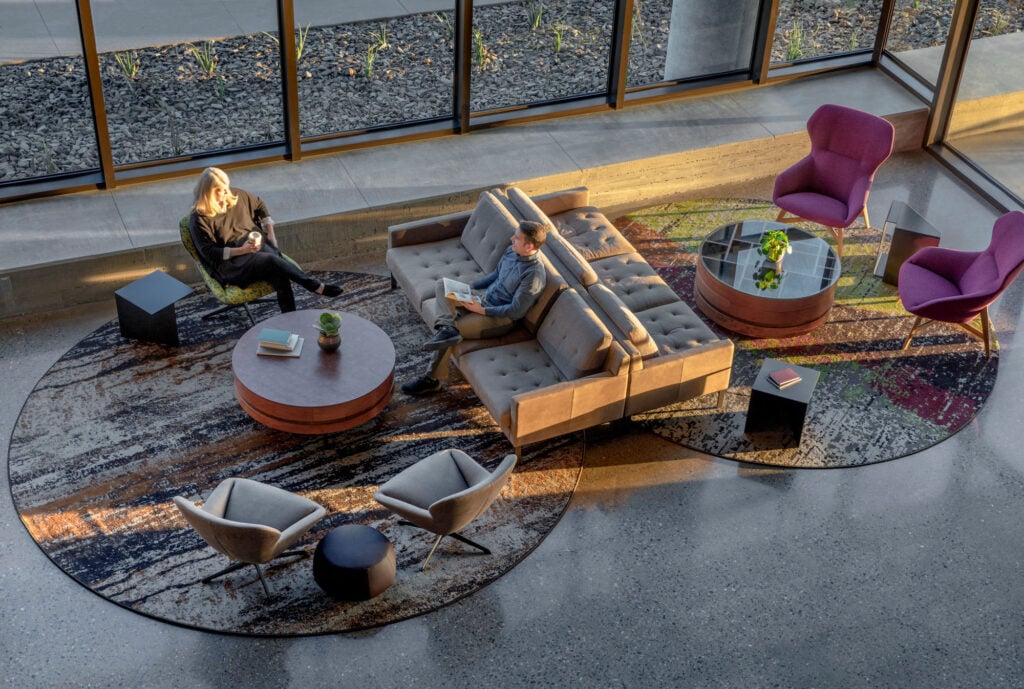
March 9, 2022
Can the Workplace Cure Burnout?
One panelist, Upali Nanda, principal and director of research at HKS, said reports of burnout are not just anecdotal. “We know it is rampant. In our most recent survey, more employees have reported having at least one symptom of burnout compared to 2020.” Nanda continued: “Connecting to coworkers is correlated to an increase in happiness.” Since the shift to a virtual workplace has come so suddenly, our brains have not had a chance to adapt.

“The kind of work Upali is doing on employee satisfaction is the future of manufacturing,” said Jennifer Kolstad. As global design director for the Ford Motor Company, these questions are not merely philosophical, but impact the happiness and wellbeing of a workforce numbering around 200,00 worldwide, and many of them are on the front lines, building cars and trucks, as opposed to white-collar “knowledge workers.”
“We’re trying to get to the heart of ideas around absenteeism and retention,” she said, explaining that Ford has to make health and wellness amenities close and convenient for all employees. “We provide nourishment, hydration, sanitation. So bathrooms must be designed differently, prayer rooms, mothers’ rooms, all this together. It’s really a total reevaluation of how you plan for manufacturing.”
Sandra Bond Chapman, founder and chief director, Center for Brain Health, says the positive effects of this rethinking ripple outwards: “We see that when people improve their work conditions, when they see a higher purpose in their work, their family relationships actually get better. When you get a sense of purpose in one place, it spreads upward.”
The Think Tank discussions were held on February 3, 10, and 17. The conversations were presented in partnership with Versteel and GROHE.
Would you like to comment on this article? Send your thoughts to: [email protected]
Latest
Projects
The Project That Remade Atlanta Is Still a Work in Progress
Atlanta’s Beltline becomes a transformative force—but as debates over transit and displacement grow, its future remains uncertain.
Profiles
WAI Architecture Think Tank Approaches Practice as Pedagogy
Nathalie Frankowski and Cruz García use their practice to help dismantle oppressive systems, forge resistance spaces, and reimagine collective futures.
Products
Functional Beauty: Hardware That Does More Than Look Good
Discover new standout pieces that marry form and function, offering both visual appeal and everyday practicality.





